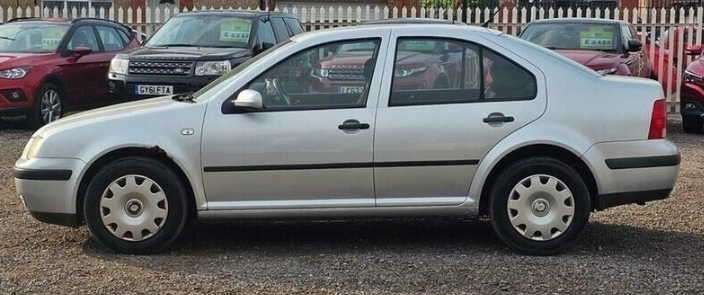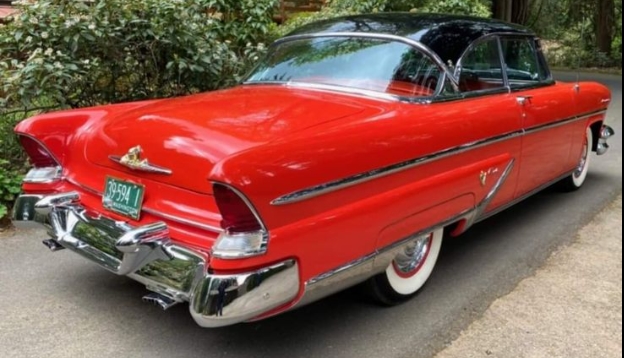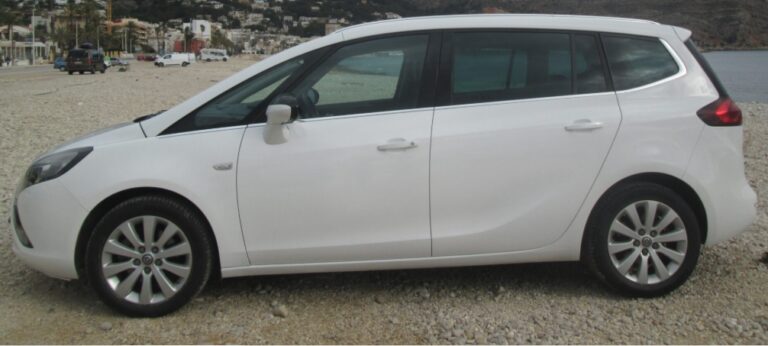Three of a Kind: The Evolution of the Renault 19, 20, and 21
In the annals of automotive history, few periods were as transformative for French manufacturer Renault as the late 1970s through the early 1990s. This era saw the company navigate shifting consumer tastes, technological advancements, and a pressing need to redefine its identity. At the heart of this journey were three distinct but spiritually connected model lines: the Renault 20/30, the Renault 21, and the Renault 19. While not a direct linear succession, these vehicles represent three crucial chapters in Renault’s evolution, showcasing a progression from avant-garde ambition to pragmatic engineering and, finally, to a mastery of mainstream quality and design.
Chapter One: The Ambitious Executives – Renault 20 & 30 (1975–1984)
The story begins in the wake of the 1973 oil crisis, a time that forced automakers to reconsider the large, thirsty saloons that had dominated the executive market. Renault’s response was characteristically bold and unconventional: the Renault 30, launched in 1975.
Designed by Gaston Juchet, the Renault 30 broke convention by packaging its executive aspirations within a five-door hatchback (or liftback) body. This was a radical departure from the traditional three-box saloons offered by German and British rivals.
The design prioritized practicality and aerodynamic efficiency, featuring a distinctive sloping rear window and a modern, airy cabin. Under the bonnet, the R30 housed the then-new 2.7-litre V6 PRV engine (Peugeot-Renault-Volvo), a powerplant born from collaboration that would go on to feature in dozens of cars.
A year later, in 1976, Renault wisely broadened the car’s appeal with the launch of the Renault 20. It shared the exact same body shell and platform as the R30 but was positioned as a more accessible large family car. The key differentiators were the front-end styling and the engine. While the flagship R30 sported four round headlamps, the R20 made do with two large rectangular units. More importantly, the V6 was replaced by a range of more economical four-cylinder engines.
Models and Trim Levels Over the Years:
The R20/30 range evolved steadily, offering a wide array of choices to appeal to different buyers.
Renault 30 (1975-1983):
TS (1975-1983): The launch model, equipped with the 131 hp 2.7-litre V6 engine. It was well-appointed with features like power steering and electric front windows, cementing its executive status.
TX (1978-1983): A more luxurious and powerful version featuring Bosch K-Jetronic fuel injection, which boosted the V6’s output to 142 hp. It also included additional creature comforts like cruise control and, often, leather upholstery.
Turbo D (1982-1983): A late addition to the range, the R30 Turbo D was one of the first diesel executive cars to feature a turbocharger. It used a 2.1-litre unit producing a respectable 85 hp, offering excellent fuel economy for its size.
Renault 20 (1976-1984):
L, TL, GTL (1976-1984): These were the entry-level models, initially powered by a modest 1.6-litre four-cylinder engine from the Renault 16. They offered basic transportation in a large, comfortable package.
TS (1977-1984): A significant upgrade, the R20 TS introduced a more powerful 2.0-litre engine with 109 hp, providing the performance the large chassis deserved.
TX (1980-1984): Topping the four-cylinder range, the TX featured a new 2.2-litre petrol engine with 115 hp, offering near-V6 levels of refinement and torque.
TD, GTD (1979-1984): Utilizing a 2.1-litre naturally aspirated diesel engine, these models were paragons of fuel efficiency and durability, becoming hugely popular with taxi drivers and high-mileage business users across Europe.
A facelift in 1980 saw the R20 adopt the R30’s more prestigious four-headlamp design on higher-trim models, along with interior updates. Despite its clever design, the R20/30 range was only a moderate success. Its hatchback styling, while practical, struggled to win over conservative executive buyers. However, it cemented Renault’s reputation for comfortable, innovative, and safe family cars.
Chapter Two: The Engineering Maverick – Renault 21 (1986–1994)
By the mid-1980s, Renault needed a replacement for both the aging Renault 18 and the R20/30. The solution was the Renault 21, a car that aimed to cover a vast swathe of the market, from basic family transport to a high-performance saloon. Launched in 1986, the R21 was a more conventional-looking three-box saloon, though its clean, angular lines were modern and aerodynamically efficient.
The R21’s most fascinating feature was hidden from view. Due to a pragmatic need to use existing powertrain components, Renault engineered the car with two different engine mounting configurations. Smaller-engined models (1.4L and 1.7L petrol, 1.9L diesel) featured a transverse engine layout. Larger, more powerful versions (2.0L, 2.2L petrol, and 2.1L diesel) utilized a longitudinal layout. This resulted in two different wheelbases for the same car—a unique and complex engineering solution that spoke to Renault’s resourceful, if slightly quirky, approach.
The range was extensive, eventually including a hugely popular estate version known as the Savanna (or Nevada in some markets) and, after a 1989 facelift, a five-door hatchback.
Models and Trim Levels Over the Years:
The R21’s lifecycle is clearly divided into two phases.
Phase 1 (1986-1989):
TL, TS, GTS, TSE: These trims corresponded to increasing engine sizes and equipment levels. The base TL had a 1.4-litre engine, while the popular TS and GTS used a 1.7-litre unit. The TSE was a well-equipped model with a 2.0-litre engine.
TXE: The initial range-topper, featuring a 120 hp 2.0-litre fuel-injected engine.
TD, GTD: Diesel models using a 1.9-litre (TD) or a robust 2.1-litre (GTD) engine.
2L Turbo: The undisputed icon of the range. Launched in 1987, this model featured a 2.0-litre turbocharged engine producing 175 hp. With its subtle body kit and blistering performance, it was a true “Q-car,” capable of challenging BMWs and Ford Sierra Cosworths. A four-wheel-drive version, the Turbo Quadra, was introduced later.
Phase 2 (1989-1994): A major facelift in 1989 brought smoother front and rear styling, a much-improved dashboard, and the introduction of the hatchback body style. The trim levels were also realigned.
Prima, Manager, Alizé: These became the new core trim names, replacing the lettered designations on many models.
TXi: A new sporty model with a 12-valve 2.0-litre engine producing 140 hp.
Baccara: A super-luxurious version featuring a leather interior, wood trim, and a host of standard equipment, aimed at the premium market.
Turbo / Turbo Quadra: The performance model continued, gaining a catalytic converter which slightly reduced power to 162 hp but remained a formidable performance saloon.
The Renault 21 was a resounding success. It was reliable, comfortable, and spacious, especially in Savanna form. The Turbo model, in particular, earned Renault immense credibility among enthusiasts and saw success in touring car racing, cementing the R21’s legacy as a versatile and capable family car with a hidden wild side.
Chapter Three: The Cornerstone of Quality – Renault 19 (1988–1996)
While the R21 solidified Renault’s position in the mid-size segment, the company’s most important battle was in the highly competitive family hatchback class, dominated by the Volkswagen Golf. The Renault 9 and 11 had served their purpose but were feeling dated. Renault knew their replacement had to be a quantum leap forward, particularly in one crucial area: build quality.
Codenamed “Project X53,” the development of the Renault 19 was a monumental undertaking. Renault invested heavily in new production methods and focused obsessively on quality control, aiming to shed its reputation for rust and electrical gremlins. The design was penned by the legendary Giorgetto Giugiaro of Italdesign, resulting in a clean, modern, and timeless shape that still looks handsome today.
Launched in 1988, the Renault 19 was initially available as a three- or five-door hatchback. It was soon joined by a four-door saloon named the Chamade and, later, a stunning Cabriolet built by German coachbuilder Karmann. The car was an immediate commercial and critical success, lauded for its excellent ride and handling, comfortable interior, and, most importantly, its vastly improved perceived quality.
Models and Trim Levels Over the Years:
Like the R21, the R19’s life was defined by two distinct phases.
Phase 1 (1988-1992):
TR, TS, GTS, GTX, TXE: A familiar trim structure based on engine size. Power came from the new “Energy” series of petrol engines (1.4L, 1.7L, 1.8L) and reliable diesel units.
TD, GTD, TDE: The diesel range, offering exceptional economy with 1.9-litre engines, both naturally aspirated and turbocharged.
16S (16V outside France): The legendary hot hatch variant. Powered by a free-revving 1.8-litre 16-valve engine producing 137 hp, the 16S was a direct competitor to the Golf GTI and Peugeot 309 GTI. It was distinguished by its unique bonnet vent, alloy wheels, and aggressive body kit.
Phase 2 (1992-1996): A comprehensive 1992 facelift gave the R19 a smoother, more rounded front end and revised rear lights, bringing it in line with Renault’s new corporate identity. The interior received a completely redesigned, higher-quality dashboard. The “Chamade” name for the saloon was dropped in most markets.
RL, RN, RT: The new trim hierarchy, ranging from the base RL to the well-equipped RT. Special editions like the Alizé and Driver were also common.
RSi: A new “warm hatch” model, featuring a fuel-injected 8-valve 1.8-litre engine, bridging the gap between the standard models and the 16V.
Baccara / Initiale: A luxury-oriented version was introduced, featuring leather seats, air conditioning, and premium finishes.
16V: The top performance model continued with the updated styling, remaining a highly desirable hot hatch throughout its production run.
The Renault 19 was an unqualified triumph. It sold in the millions, consistently topped sales charts across Europe, and was named Car of the Year in several countries. It successfully rebuilt Renault’s reputation for quality, paving the way for its even more successful successor, the Mégane.
.
NO MORE dead batteries with this:

.
Conclusion: A Legacy of Progress
Viewed together, the Renault 20/30, 21, and 19 tell a compelling story of corporate evolution. The R20/30 was a product of 1970s intellectual ambition—clever and comfortable but perhaps too unconventional for its target market. The R21 was the pragmatic bridge, a technically fascinating car that combined workhorse reliability with surprising flashes of high-performance brilliance. Finally, the R19 was the culmination of lessons learned: a car that blended Italian style, German-rivalling quality, and traditional French comfort into a world-beating package. Together, they represent Renault’s journey from a maker of quirky, innovative cars to a confident, quality-focused global automotive powerhouse.







